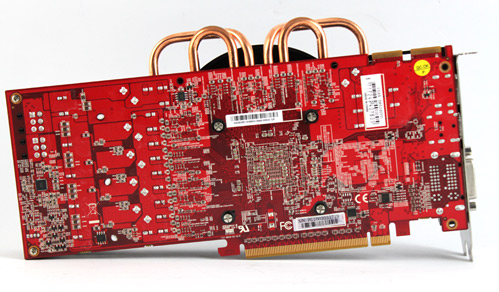Index
Page 3 of 9
Just like the reference HD 5850, Club3D Radeon HD 5850 Overclocked Edition comes with dual-slot cooling, albeit completely different from the reference one. The large heatpipes could not be hidden behind the plastic and are thus clearly visible. The heatpipes are not as tall as to make installation difficult in standard computer cases, but you might want to watch out with smaller cases as a 13.7cm tall card might make it a seriously tight fit or in the worst case scenario not fit at all. Note that Radeon HD 5850 is 9.5” or 24.1cm long, which is significantly shorter than Radeon HD 5870, which is 11” or 28cm long.
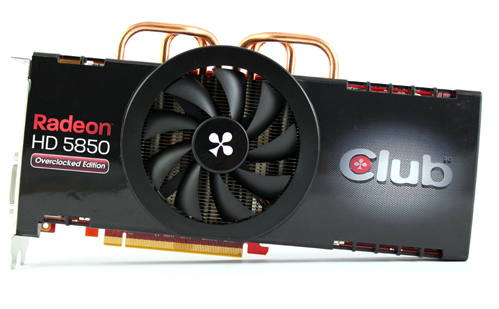
Unlike the reference cooler whose fan is at the end of the card and blowing through the card, Club3D’s HD 5850 OC cooler comes with a centrally placed fan and uses heatpipes to equally distribute heat from the GPU to the entire heatsink surface.
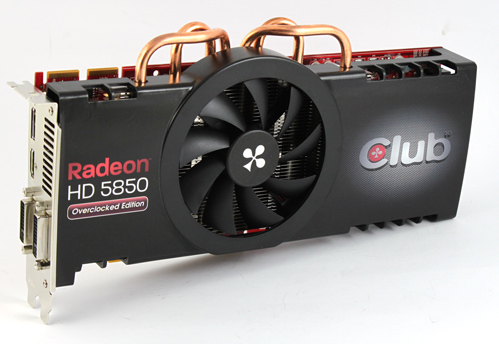
It’s well worth noting that Club3D’s HD 5870 uses the same cooler, so you don’t have to worry about it having to cool the HD 5850 OC’s GPU.
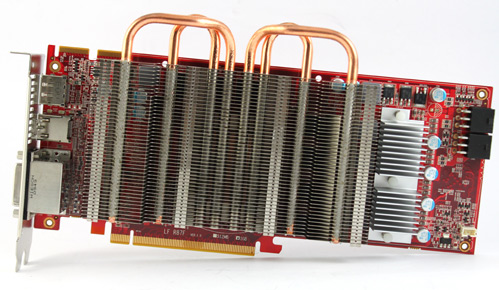
The fan is a part of the plastic hood, which covers the entire card. The hood not only gives the card a better look but it also routes the air from the fan to the heatsink.
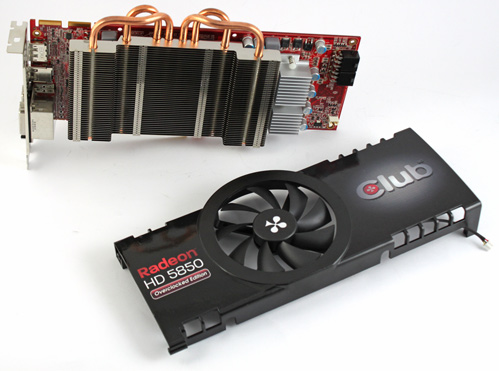
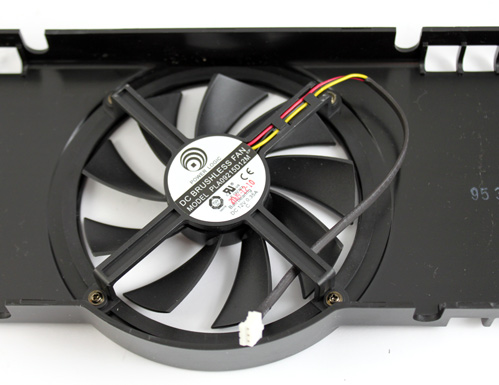
The heatsink has a copper base with four heatpipes. As you can see from the following picture, only the GPU is in direct contact with the base and the heatsink.
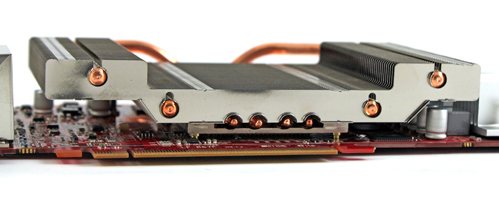
The memory (Hynix H5GQ1H24AFR TC2 rated at 2.5GHz) is cooled by the air passing through the heatsink.
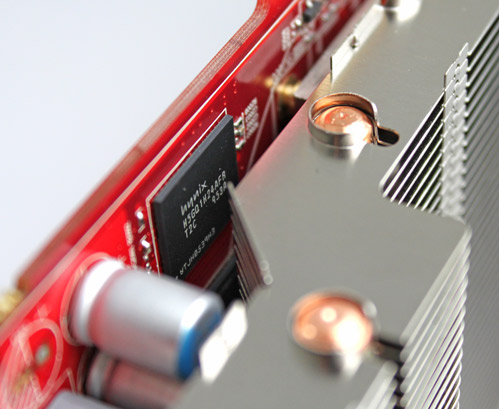
The HD 5850 is powered via two 6-pin PCI-E power connectors. AMD uses power-saving tweaks that help the HD 5850 to draw only 27W in idle (just like the HD 5870) and up to 151W during more intensive 3D work (the HD 5870 needs up to 188W in 3D – because 3D clocks are higher and it has 160 stream processors more).
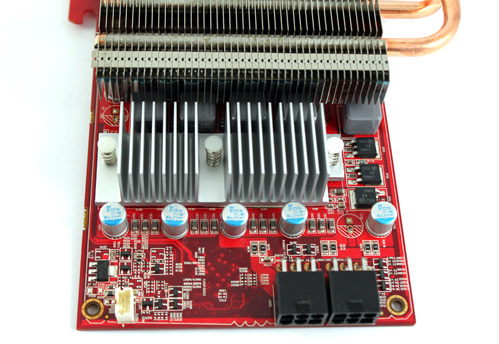
Club3D HD 5850 Overclocked Edition comes with same configuration of outs – two dual-link DVIs, HDMI and DisplayPort. Thanks to the advanced display output logic, the card has six TMDS signals at its disposal and those can be combined in different ways, but note that one dual-link DVI requires TMDS lines. In practice, outs can be mixed for any combination of three digital outputs as long as one of the three outputs is DisplayPort. Otherwise you are limited to two DVI outputs or to one HDMI plus DVI output or in other words – you can’t use DVI/DVI/HDMI combination. Apart from the option to chain up to three monitors on one card, the HD 5850 allows for using them as one monitor with a higher resolution spread across three monitors.
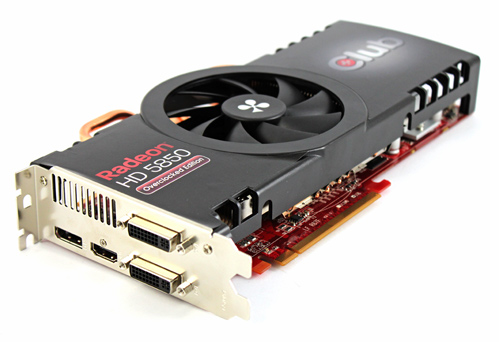
All the memory is located on the GPU side of the PCB, and unlike the HD 5870, there's no backplate.
